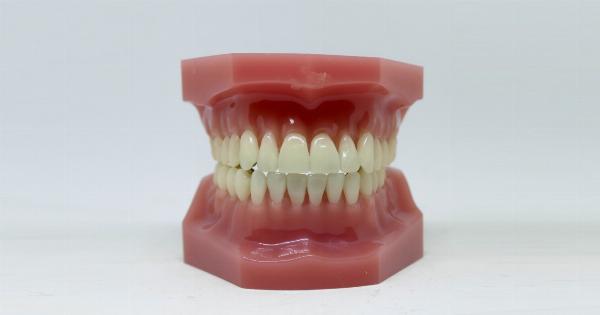Having a bright, white smile is a goal for many people. A beautiful smile can boost your confidence and help you make a great first impression.
If your teeth are discolored or stained, you may be considering teeth whitening methods to enhance the appearance of your smile. However, with so many options available, it can be overwhelming to choose the right method for you. In this article, we will explore different teeth whitening methods and help you determine which one is the best fit.
1. Over-the-Counter Whitening Products
One of the most accessible and affordable teeth whitening options are over-the-counter whitening products. These include whitening toothpaste, whitening strips, and whitening gels.
While these products can provide noticeable improvements, they typically contain lower concentrations of whitening agents compared to professional treatments. If your teeth have mild discoloration or you’re on a budget, over-the-counter whitening products can be a good starting point.
2. Professional Teeth Whitening at the Dentist’s Office
If you’re seeking faster and more dramatic results, professional teeth whitening performed at a dentist’s office is an excellent option.
Dentists use higher concentrations of whitening agents, such as hydrogen peroxide, which can effectively remove stubborn stains and whiten your teeth several shades. Professional whitening treatments may involve customized trays or laser technology to further enhance the results. Dental professionals can assess your oral health and adjust the treatment to fit your needs, ensuring safe and efficient whitening.
3. Take-Home Professional Whitening Kits
For those who prefer the convenience of at-home treatments but want a professional touch, take-home professional whitening kits are a fantastic choice. Your dentist can provide you with custom-made trays and professional-grade bleaching gels.
This allows you to whiten your teeth at your own pace, following your dentist’s instructions. These kits often yield impressive results, but it may take longer compared to in-office treatments.
4. Natural Teeth Whitening Remedies
If you prefer more natural approaches, there are several home remedies that people claim can whiten teeth. These include brushing with baking soda, oil pulling, and using activated charcoal.
While these methods may have some whitening effects, the scientific evidence supporting their efficacy is limited. It is important to note that natural remedies may not deliver the same level of results as professional treatments.
5. Whitening Toothpastes
Whitening toothpastes are a popular option for maintaining and enhancing the whiteness of your teeth. These toothpastes contain mild abrasives or specialized ingredients that help remove surface stains.
While they can be an excellent addition to your oral care routine, they are not as effective in treating deep stains or discoloration. However, they work well in combination with other whitening methods as a preventive measure.
6. In-Office Whitening with Light Activation
In-office whitening with light activation is a relatively new method that combines professional-grade whitening gels with a specialized light source. The light helps accelerate the whitening process, providing faster and more noticeable results.
This method is known for its effectiveness in breaking down tough stains. However, it may not be suitable for individuals with tooth sensitivity or certain dental conditions.
7. Tray-Based Whitening Systems
Tray-based whitening systems involve the use of custom-fitted trays filled with a whitening gel. These trays are worn over the teeth for a specific period, allowing the gel to work its magic.
Tray-based systems are often recommended by dentists due to their efficiency and ability to deliver even results. While professional tray-based systems can be more potent, there are also over-the-counter alternatives available for convenience.
8. Cosmetic Dental Veneers
If you have severe discoloration that does not respond well to traditional whitening methods, cosmetic dental veneers may be a viable solution. Veneers are thin porcelain shells that are custom-designed to fit over your teeth.
They can instantly transform the appearance of your smile, providing a permanent and white aesthetic. However, dental veneers are a more invasive option, as they require enamel removal before placement.
9. Whitening Mouthwashes
Whitening mouthwashes are a simple and convenient addition to your daily oral care routine. These mouthwashes often contain hydrogen peroxide or other whitening agents that help remove surface stains.
However, the contact time of the whitening agents with your teeth is minimal, so the level of whitening may be less noticeable compared to other methods. Nonetheless, using a whitening mouthwash can help maintain the brightness of your teeth.
10. Combination Approaches
In some cases, combining multiple teeth whitening methods can yield the best results.
Your dentist can create a treatment plan tailored to your needs, which may involve a combination of in-office treatments, take-home kits, and ongoing maintenance with whitening toothpaste or mouthwash. This comprehensive approach can address both immediate and long-term whitening goals.
Conclusion
Choosing the right teeth whitening method depends on various factors, including the severity of discoloration, personal preferences, budget, and oral health conditions.
Over-the-counter products can be a good starting point, while professional treatments offer faster and more noticeable results. Natural remedies and whitening toothpastes serve as supplementary options, whereas cosmetic dental veneers provide a permanent solution for severe discoloration.
Whitening mouthwashes and in-office treatments with light activation offer additional choices. Ultimately, a combination approach customized by your dentist may provide the best outcome. Consult with a dental professional to determine the most suitable teeth whitening method for your individual needs.




























